It has been a steady decline for Atlético Madrid under Diego Simeone ever since the turn of 2021. Los Colchoneros were on course to lift their second La Liga title of the Argentine’s reign and held a ten-point lead at the top of the table in January.
By the end of the season, Atlético did lift the crown, but it took until the final day to seal the victory, overcoming a one-goal deficit against Real Valladolid and making it incredibly hard for themselves.
Captain Koke admitted that Atlético Madrid are destined to suffer which was possibly the best way to summarise the side limping to glory. However, it did feel as though if the league lasted another week or two, there would have been different victors.
This rather inconsistent vein of form carried over into the next season. Atlético finished 15 points behind eventual champions Real Madrid and were eliminated in the quarter-finals of the UEFA Champions League.
This season, things got off to a rather worrying start to the campaign. Simeone’s dogged side could barely string consecutive wins together and had even been knocked out of a relatively comfortable Champions League group, finishing bottom, leading many to believe things had gone stale under the long-term manager and that it was time for a change.
After a narrow defeat to Barcelona at the start of January, Atlético Madrid sat fifth but were just two points above Athletic Club in seventh who had a game in hand.
But, in fact, this was the team’s last defeat in La Liga, having won six of their last nine, drawing thrice, including a 1-1 tie in the Madrid Derby away from home. The Mattress Makers have conceded merely four goals in those nine matches too, scoring 16 and moving up to third. Atlético are starting to look like the determined warriors of old.
This tactical analysis piece will be a scout report of Atlético’s much-improved form over the past two months and will be an analysis of Simeone’s tweaked tactics at the Wanda Metropolitano.
Lower defensive line
Ever since their most recent title-winning season, Atlético Madrid have moved away from a team that solely deploys a 4-4-2.
The 4-4-2 became synonymous with Simeone and his side almost in the same way that the 4-3-3 has been married to Pep Guardiola. Neither invented the formations but both have been espoused with their preferred shapes. When you think 4-4-2, there is a good chance that the Atléti coach springs to mind.
However, since 2020, Simeone began implementing a little more structural flexibility into his side, starting with the consistent introduction of using a 3-5-2. During Atlético Madrid’s title-winning campaign two years ago, the 3-5-2 was used more than the 4-4-2.
Still to this day, that tactical unpredictability is evident with Los Colchoneros.
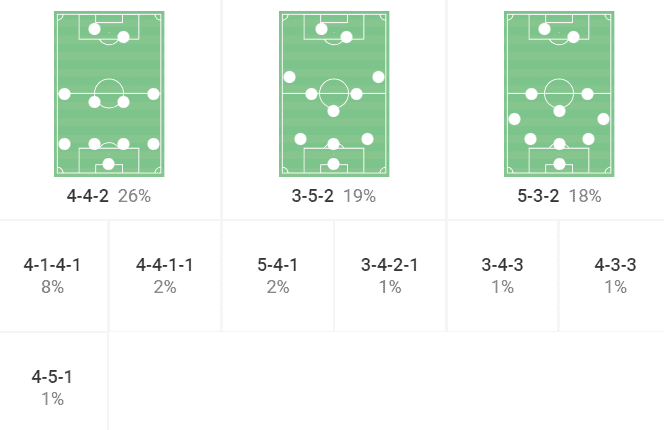
The 3-5-2/5-3-2 has been deployed in 37 percent of the team’s matches, although the 4-4-2 is still close behind at 26 percent usage.
But what’s also noticeable from the graphic above is how many different shapes Simeone has experimented with this season. It’s not just a case of him choosing between the 3-5-2 and the 4-4-2. Atlético can line up in any formation.
Recently, in the Madrid Derby, the experienced coach went with a classic 4-4-2, whereas in a 3-0 victory over Real Valladolid, the 4-1-4-1 was chosen. Meanwhile, in the unexpected 6-1 hammering of Sevilla at the start of March, the players lined out in a 3-5-2.
But regardless of the formation, there are still defensive principles that are a constant in the team’s style which Simeone expects to be carried out with diligence and authority. One of these is his decision to drop the defensive block lower after the defeat to Barcelona two and a half months ago.
Prior to this, Atlético Madrid were pressing really high up the pitch, looking to win the ball as close to the opposition’s goal as possible.
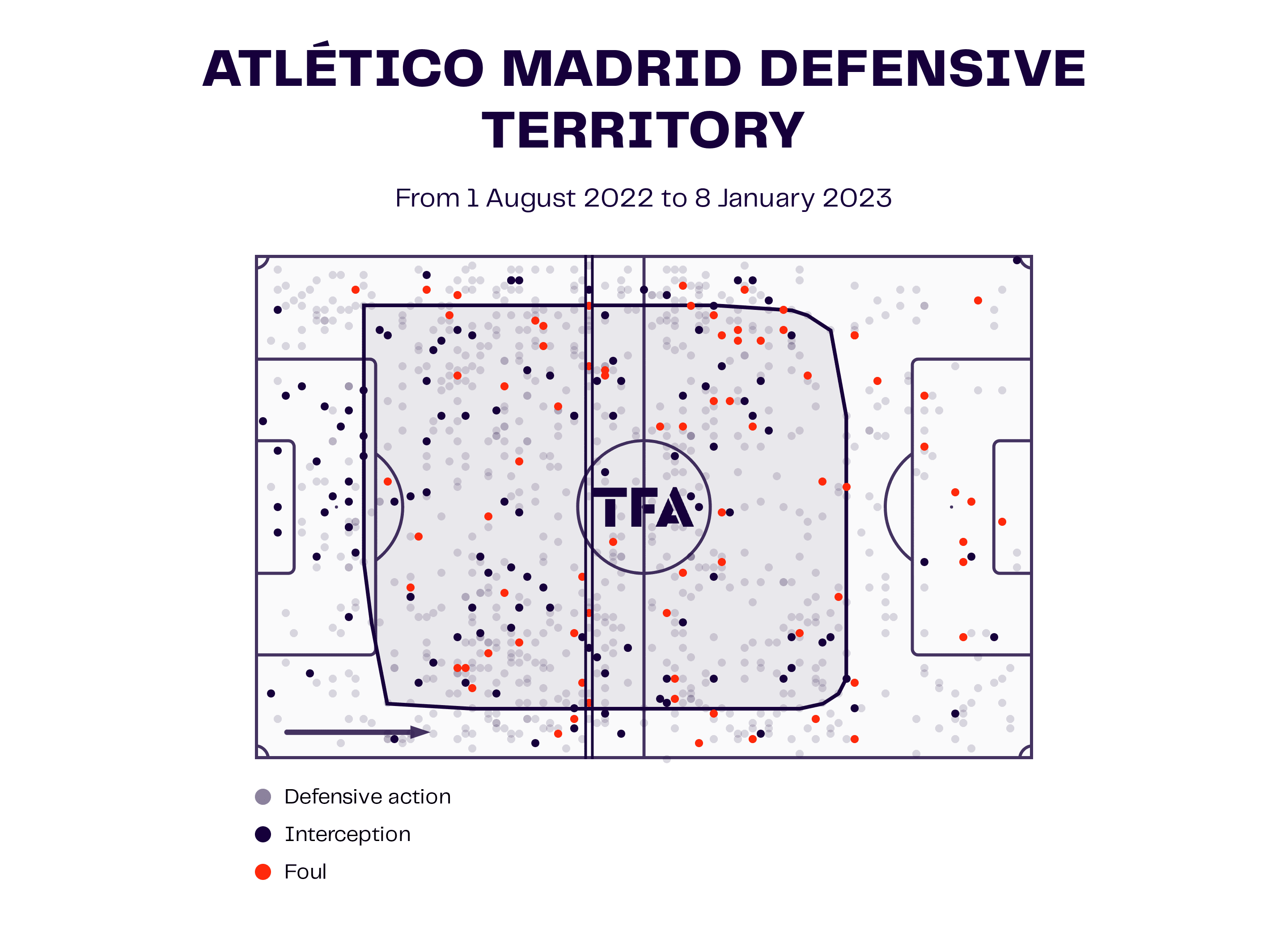
As can be seen from the previous data viz, Atlético’s average defensive line height is almost right at the halfway line. The centre-backs were almost always parked just inside their own half as Simeone looked to force mistakes from their opponent’s build-up.
However, this caused Atlético Madrid a lot more problems this season than it posed. Los Colchoneros lack speed at the back with players such as Mario Hermoso, José María Giménez, Stefan Savić and Axel Witsel all having rotated the centre-back slots. None are particularly quick, although perhaps Hermoso has a little bit of an edge over the rest.
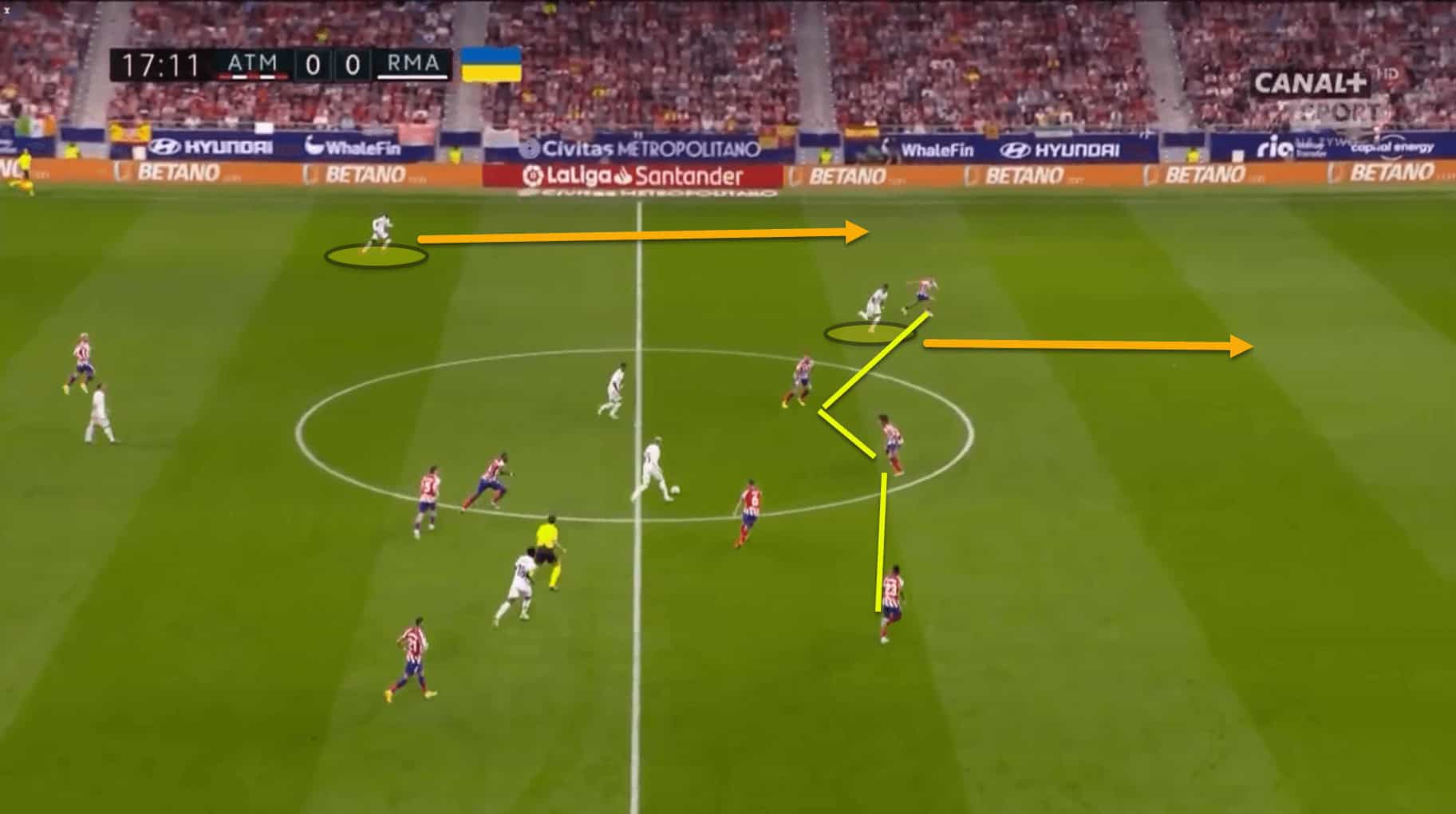
Real Madrid managed to break through their rival’s high block and took advantage of the large spaces behind the backline. Using the menacing speed of Vinicius Jr and Rodrygo, Los Blancos took the lead, stretching Atlético’s backline and beating them with pace which the hosts couldn’t cope with.
Ever since the defeat to La Blaugrana, Atlético Madrid’s average defensive line height has dropped. The drop hasn’t been overwhelmingly large, but it has still been significant enough that the change is noticeable on the field.
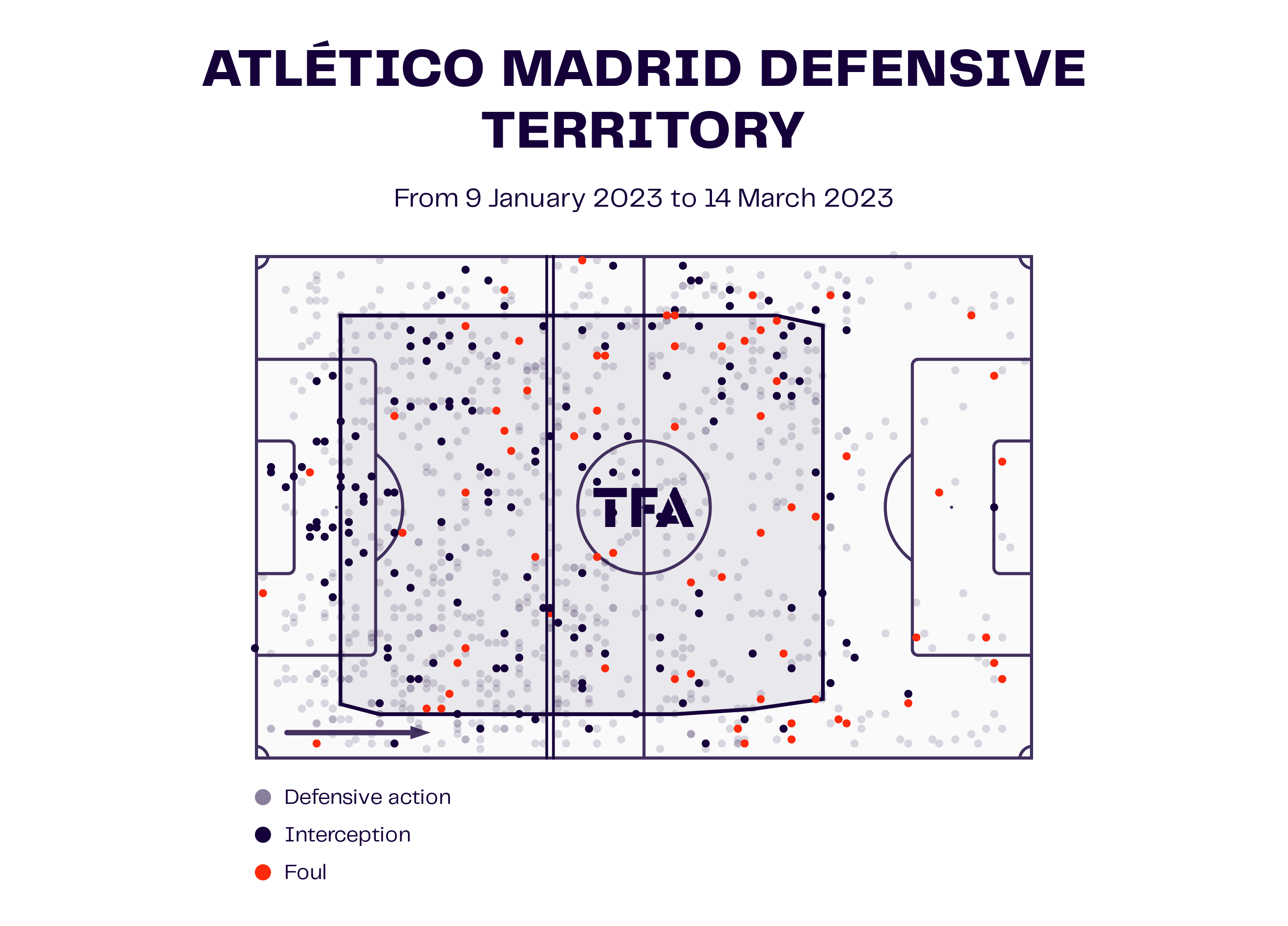
For the most part, Atlético Madrid are now sitting in a mid-block, regardless of the formation, and are allowing their opponents to build out from the back before engaging right around the middle third of the pitch.
As always, Simeone wants his players to stay incredibly compact within the defensive block, keeping at close proximity to one another and shuttling the attacking play out wide to use the touchline as an extra man.
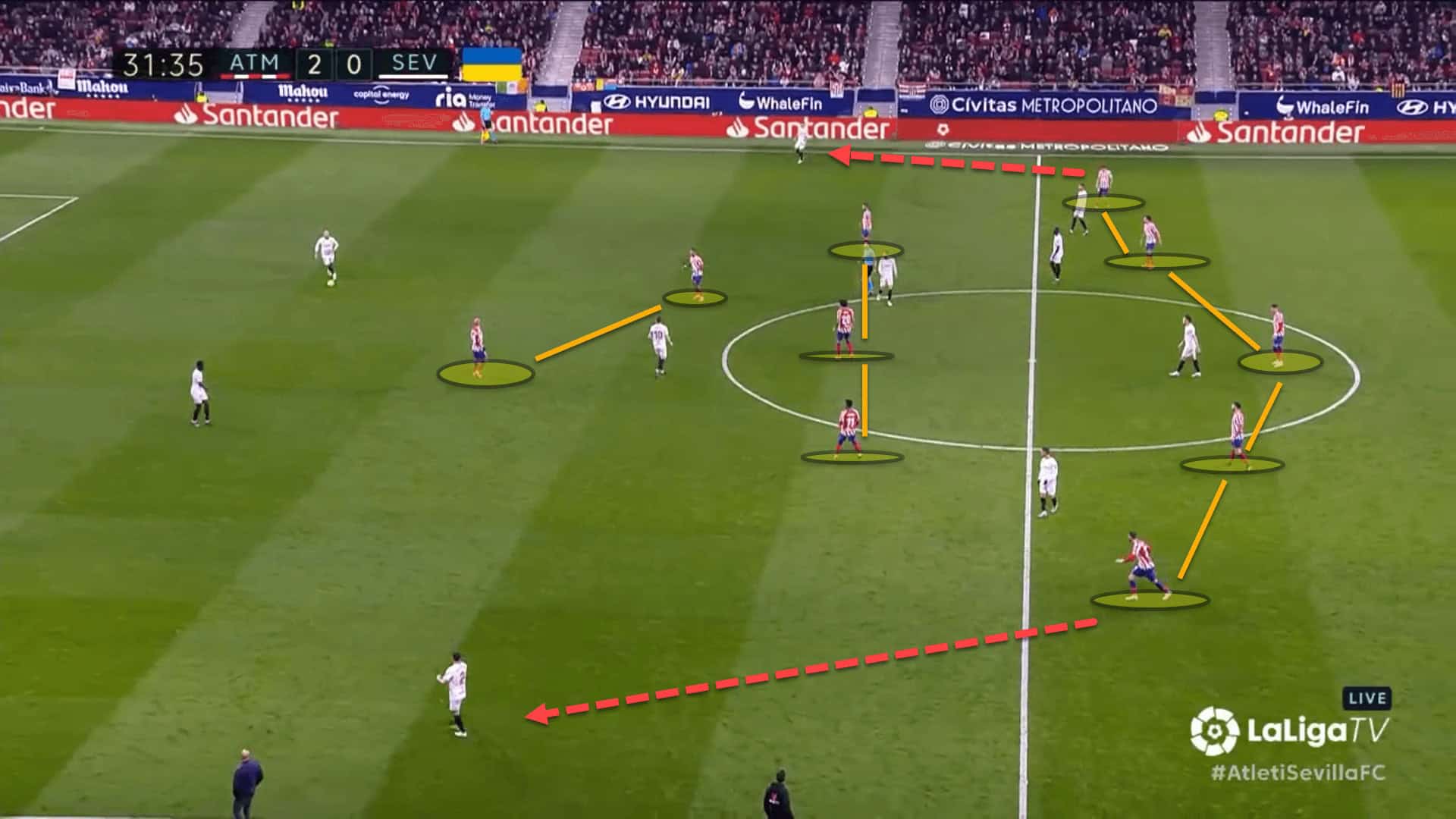
The wingbacks are the most aggressive out of all the players in the team during this phase. The wingbacks must always be ready to step out and quickly close down the nearest player to them before eventually being supported by the rest of the defensive unit when the block shifts across to the ball side.
The team’s defensive record has improved quite a lot since Simeone made this tactical change. From the start of the season, right up until Atlético Madrid’s last defeat at home versus Barcelona, the side averaged an expected goals against (xGA) per game of 1.23.
After losing to the champions-elect, Atlético’s xGA has dropped down to 1.05 in all competitions which is quite a significant jump.
The resilient and rock-solid defence that we had become accustomed to from Simeone’s team went away for a while but it’s very much back in force now in Madrid.
Breaking down a low block
Atlético Madrid have encountered the same issue over and over in recent seasons. While they are the masters of a mean medium-to-low block and shutting even the best attacks down, they struggle to carve a side open when the bus is parked at the edge of the opposition’s penalty area.
The issue was particularly evident this season after Luis Suárez left the club on a free transfer at the end of the previous campaign. When Atlético lifted La Liga in the 2020/21 season, the Uruguayan striker’s goals were worth 21 points over its course. Losing these goals without an adequate replacement was far from ideal.
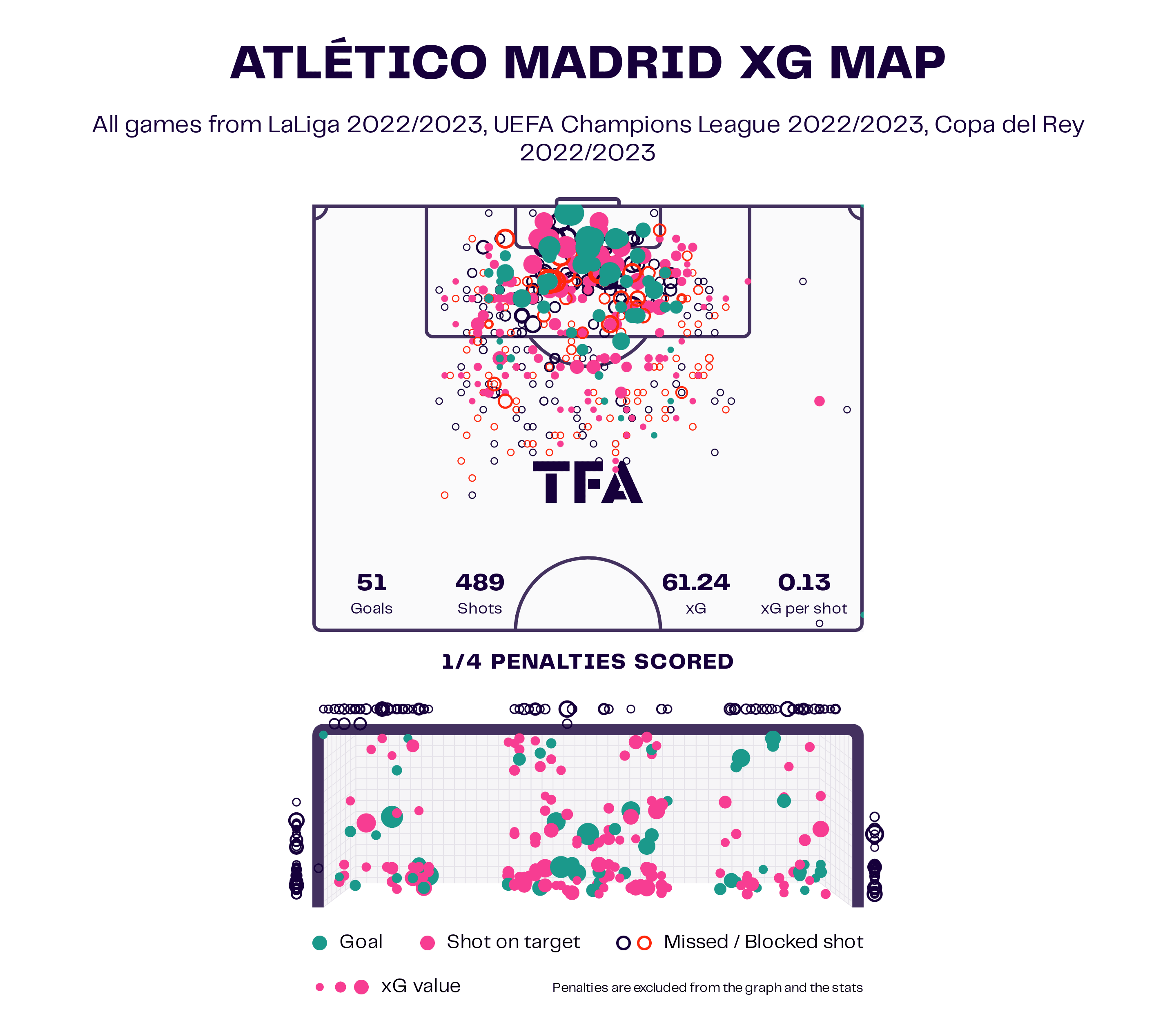
Los Colchoneros have still scored 51 goals in all competitions this season, including 36 non-penalty goals in La Liga. However, they have underperformed their total xG by about ten goals which is quite concerning.
Nevertheless, this has improved in recent weeks. Over Atlético Madrid’s previous ten fixtures, the team have been matching their xG, bagging 18 goals from an xG of 17.59.
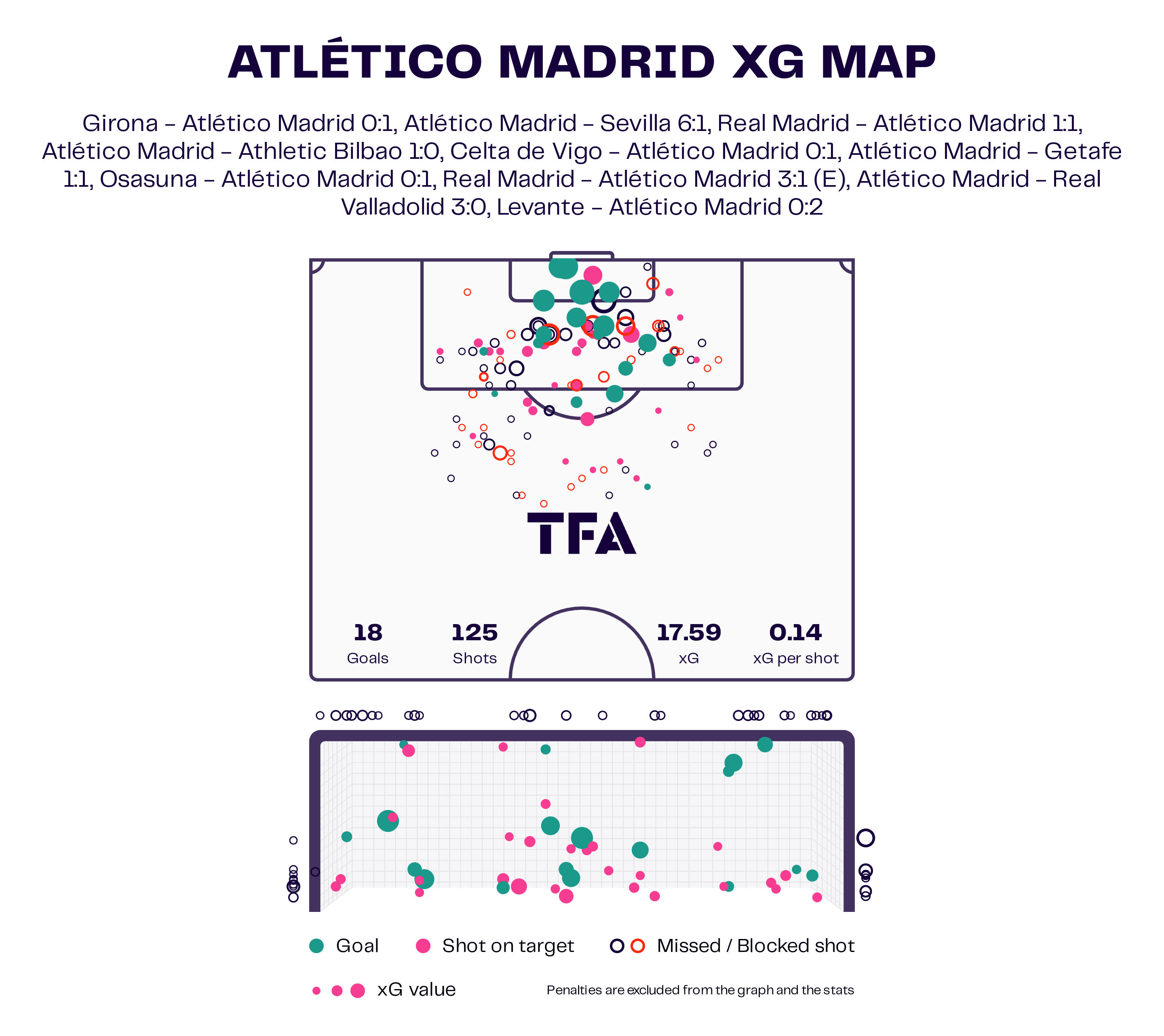
The sample size is much smaller than over the course of the whole season but it’s still a sign that the 11-time La Liga champions are improving in the second half of the campaign.
When watching Atlético Madrid in recent weeks, particularly since the beginning of this nine-game unbeaten run in Spain’s top-flight, the addition of attacking variety to their game has been stark. Atlético can attack in numerous different ways, meaning better chances are being created and so the lack of a prolific striker like Suárez has been far less noticeable because others can chip in with goals such as Memphis Depay, Álvaro Morata and Antoine Griezmann.
When breaking down a deep defensive block, the Spanish giants attack in two main ways. Let’s begin with countermovements.
Countermovements are when at least two players run in opposite directions with the intention of stretching the opposition and finding space. For instance, one drops short, dragging a centre-back out of position while the other runs in behind.
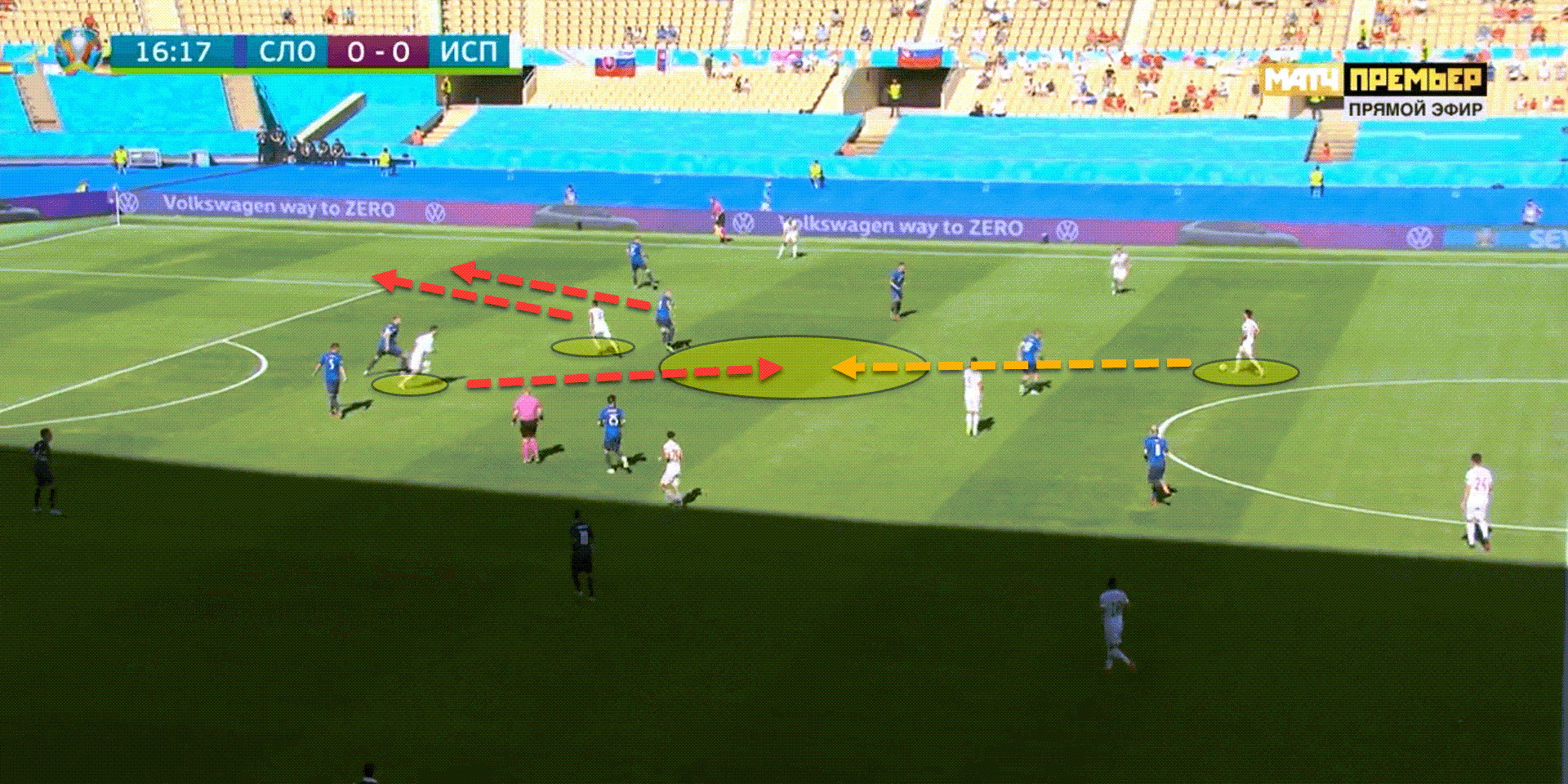
This is a really good example of a countermovement between two players. Morata drops deep, dragging a central defender with him. Spotting this, Koke is ready to attack the space vacated at the back.
The ball-carrier, Eric García, can either play into the feet of Morata who can attempt to slip it in behind to Koke or can go directly into the channel to the midfielder himself.
Morata is one of the most intelligent strikers on the planet. While he may earn critics for his lack of goalscoring prowess, his tactical and technical intelligence is unmatched. Simeone uses this to his advantage in Madrid.
Having players like Morata, Griezmann and Depay in the frontline who are excellent at dropping deep to receive in pockets and attacking the depth make these countermovements swift and successful.
The players have built a wonderful understanding of when to time the countermovements correctly to break down a low block.
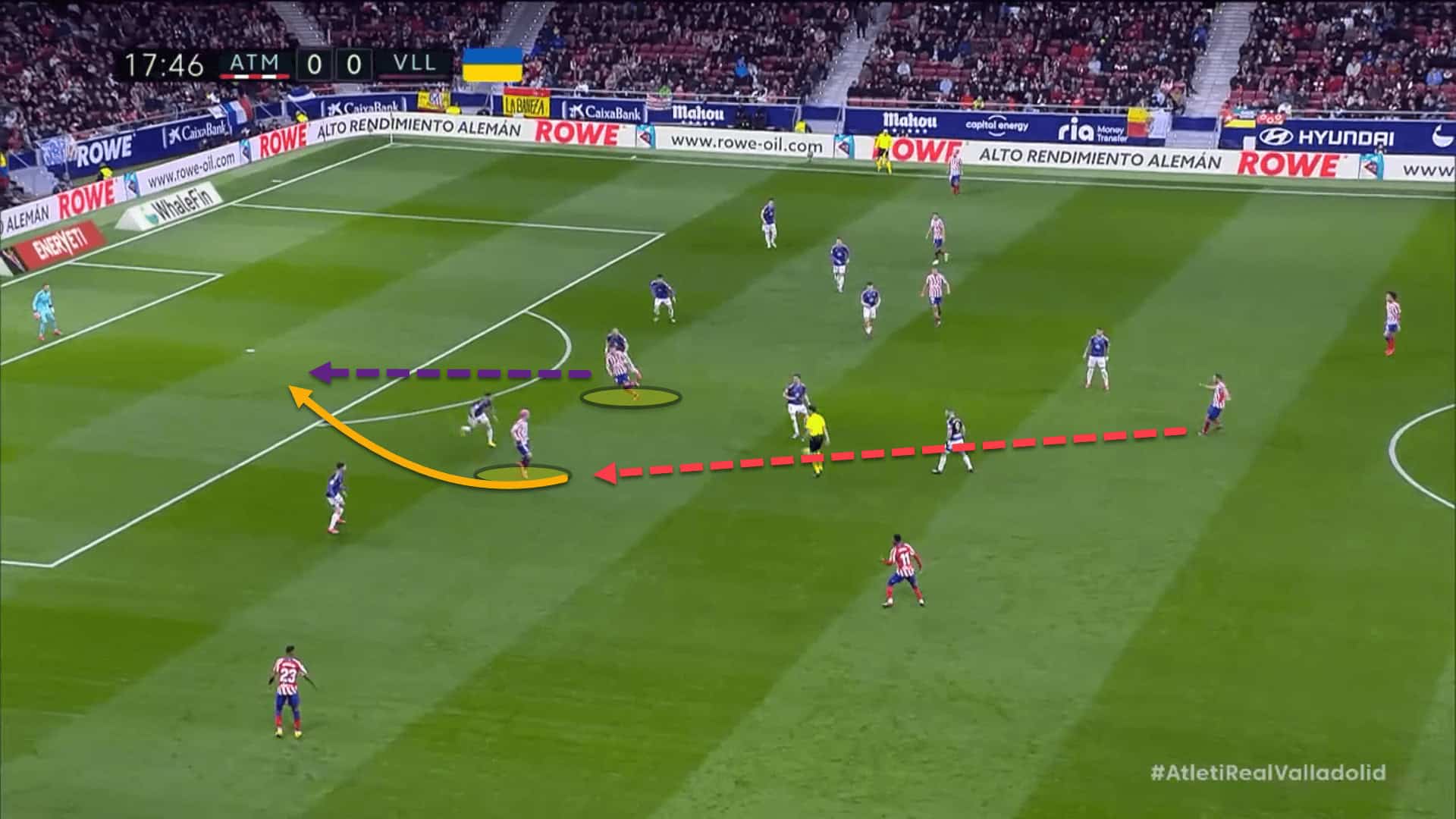
Here is a perfect example of Atlético Madrid using a countermovement between two attacking players to break down the opposition’s low block to open the scoring.
Griezmann dropped deep to receive, dragging Real Valladolid’s right centre-back out of position. Having scanned, he knew that Morata would make the countermovement behind him into the space and so the Frenchman flicked the ball around the corner into his strike partner’s feet. Morata scored to cap off a wonderfully intuitive move.
But countermovements can be incredibly difficult to pull off against a low block and so it’s important to have some attacking variety too. The second method used by Atlético to break down a defensive block and create more chances is by overloading one side of the pitch to switch it to the other.
This is primarily called ‘overloading to isolate’ and is notorious with teams adopting principles of positional play.
The attacking side overloads one flank of the pitch, causing the defensive block to shift their entire defensive block across to the ball side. In turn, one attacker, usually the winger or the fullback/wingback, pulls wide on the far flank to receive a switch of the play.
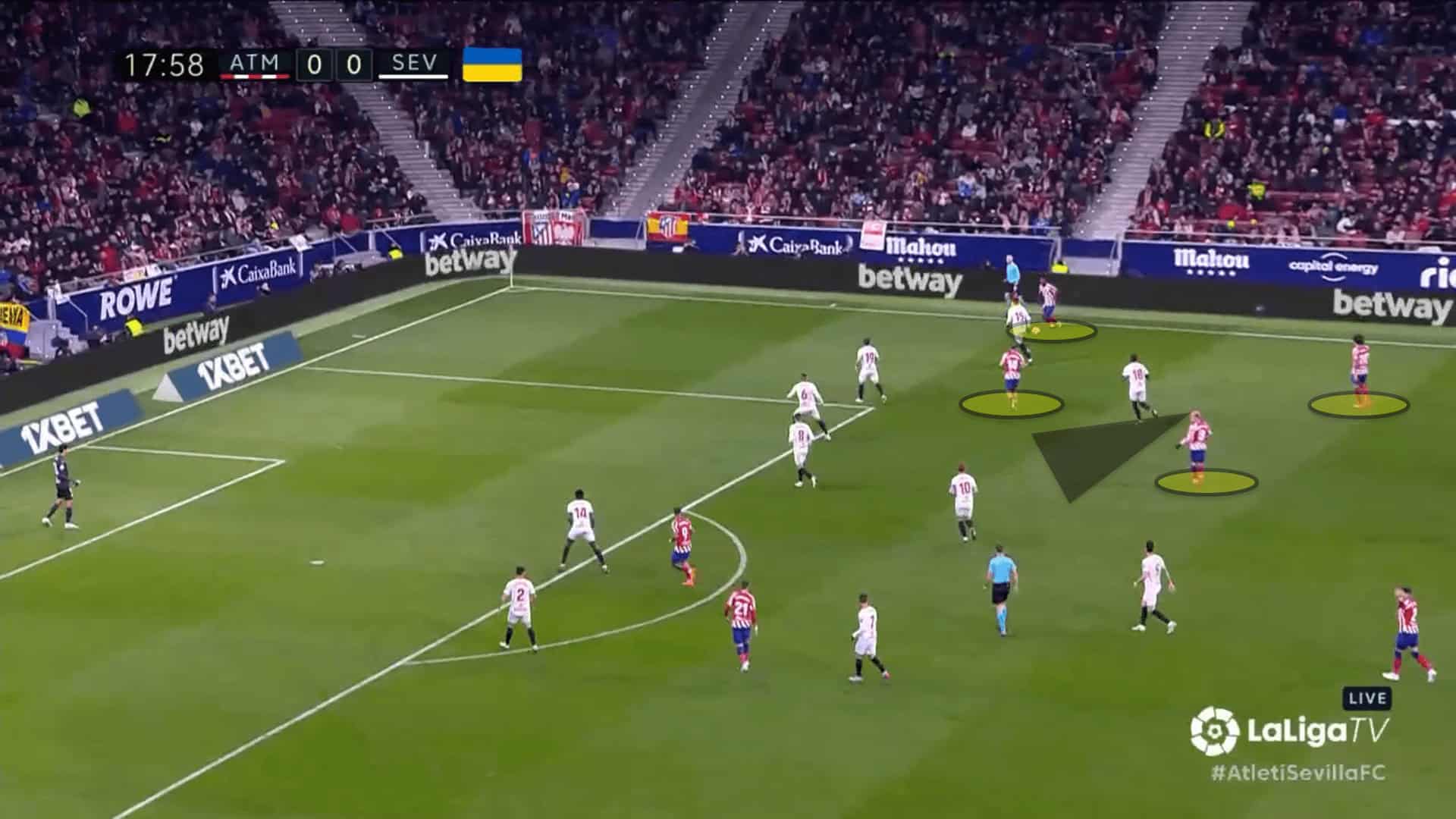
In this instance, in Atlético Madrid’s 6-1 hammering of Sevilla recently, Los Colchoneros swarmed the right side of the pitch with several players. Both Axel Witsel and Thomas Lemar pushed across from their regular midfield positions while Griezmann came over to get involved and Llorente advanced forward as the right wingback.
But the most important detail from the image is Griezmann scanning over his left shoulder to see Hermoso on the left flank, who is out of picture right now, getting forward from the back. The World Cup winner knew that Sevilla were impenetrable on the right and so the direction of attack would have to be switched.
Griezmann received the ball on the half-turn and already knew exactly where his next pass was.
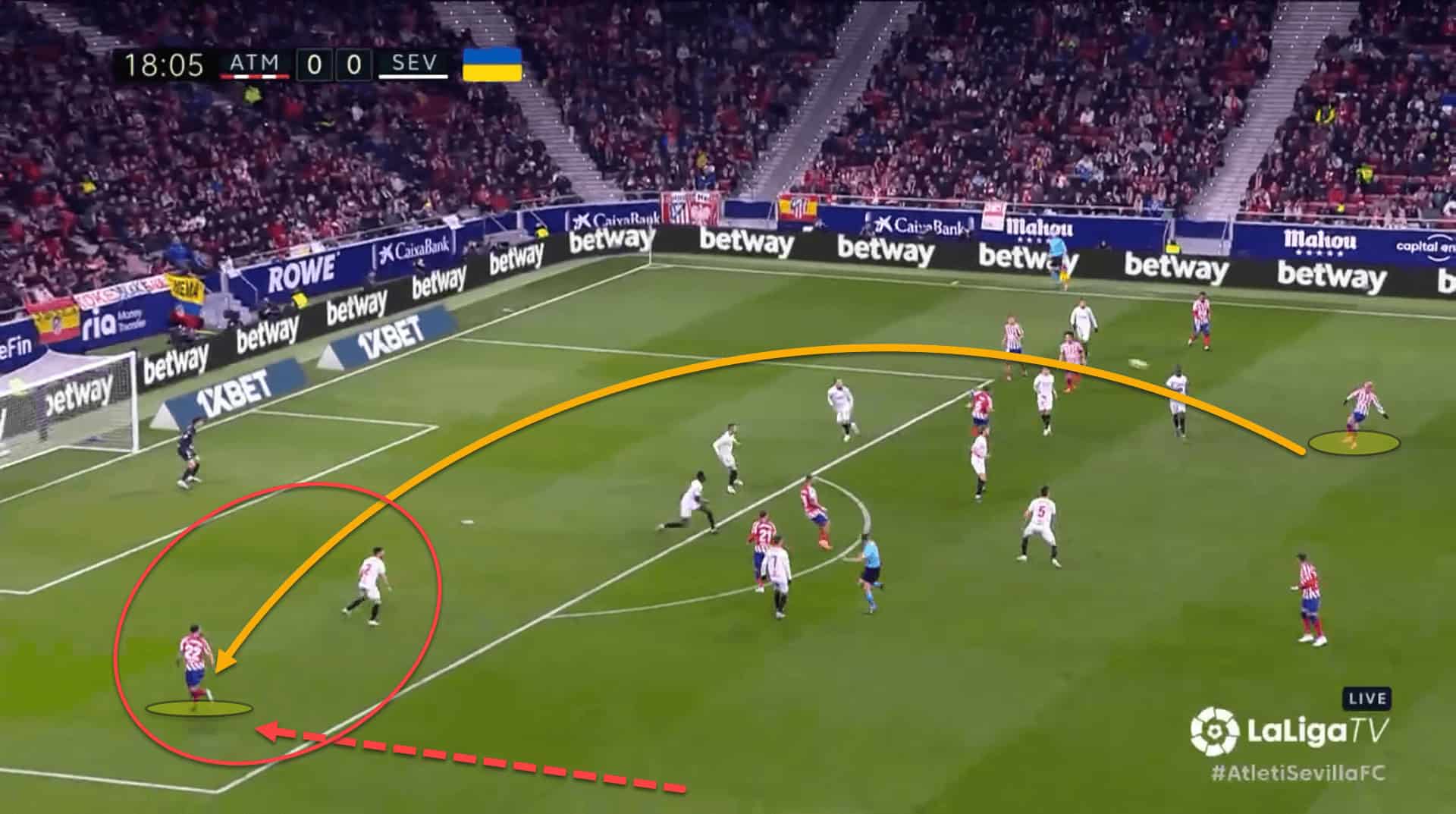
Hermoso trapped the switch perfectly and was free to take on his man 1v1. On this occasion, it was Hermoso, but normally it would be Yannick Carrasco as the left wingback, giving Atlético qualitative superiority over the opposition’s wide defender.
From numerical superiority on the right to having qualitative superiority on the left. Atlético Madrid are associated with counterattacking football and a dogged defensive block but there are still so many positional play principles displayed from the European giants in possession.
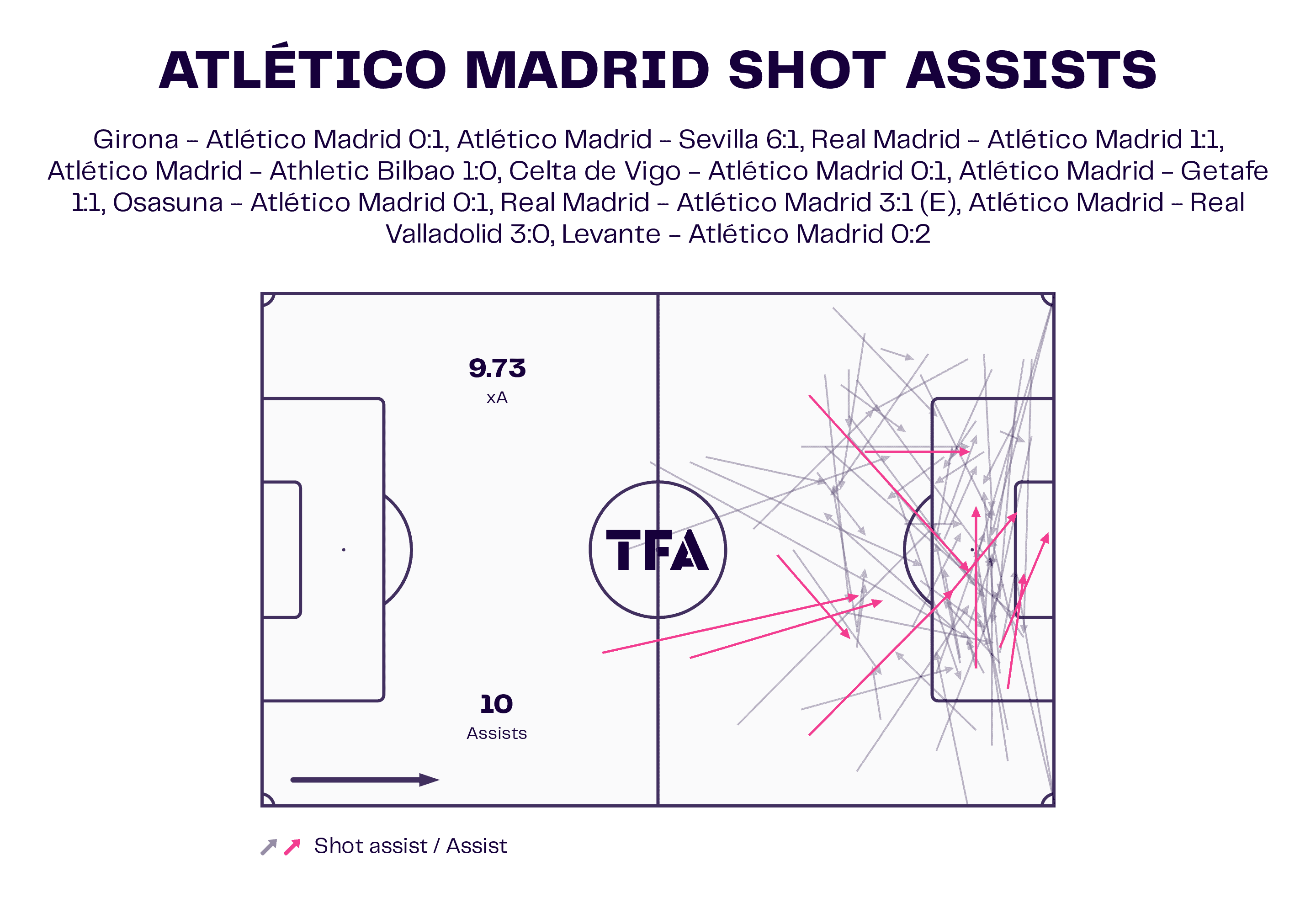
We can also see that there has been a nice blend of chances created from corners, the flanks and the central corridors over the past ten games in all competitions by Atlético Madrid, showcasing the variety in the side’s attacking arsenal.
On top of this, they are scoring the chances being created which was a problem beforehand. More offensive unpredictability makes a team harder to defend against and now Los Colchoneros are back to being a threat in front of goal, capable of breaking down the sturdiest of defensive blocks.
Counterattacking threat
Finally, let’s discuss the aspect we all love the most about Atlético Madrid. While many will fawn over the sumptuous and scintillating possession-based football of Pep Guardiola’s Manchester City or Mikel Arteta’s Arsenal, there really is nothing more pleasing to the eye than a punishing counterattack.
Atlético Madrid are not passive in the defensive phase. Simeone wants his side to still be on the front foot, dictating where the opposition can play and being aggressive to win it back as quickly as possible to transition forward.
And there is still no side in the world better at hitting an opponent on the break than Atlético, although this is a subjective statement, of course.
When Simeone’s men regain possession, the furthest players up the pitch look to run in behind as quickly as possible. The ideal first pass is always forward.
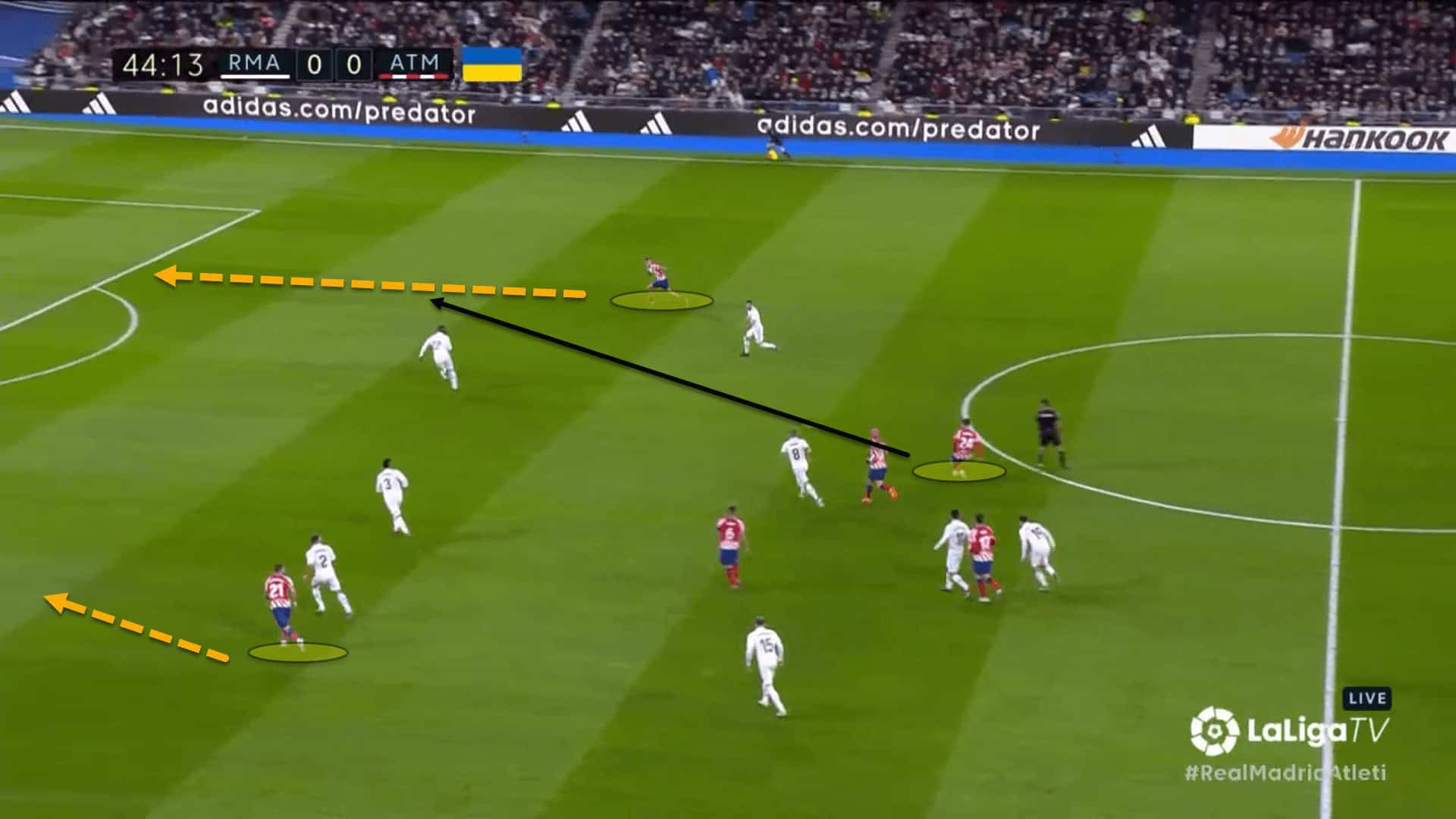
Here, Atléti won the ball near the halfway line after a tussle for the second ball from a goal-kick. Real Madrid’s backline were disoriented and there was no midfield protection.
The ball fell to Pablo Barrios who was under no pressure and so the academy product got it out of his feet and found Llorente who was screaming for it in the channel between Real Madrid’s left-back and centre-back.
Atlético Madrid’s ability to break quickly from the defensive phase to the attacking phase is still one of the team’s key strengths and has been for almost all of Simeone’s reign. Regardless of the height of their defensive block and how high or low the ball was won back, the Spanish side can get up the field in seconds.
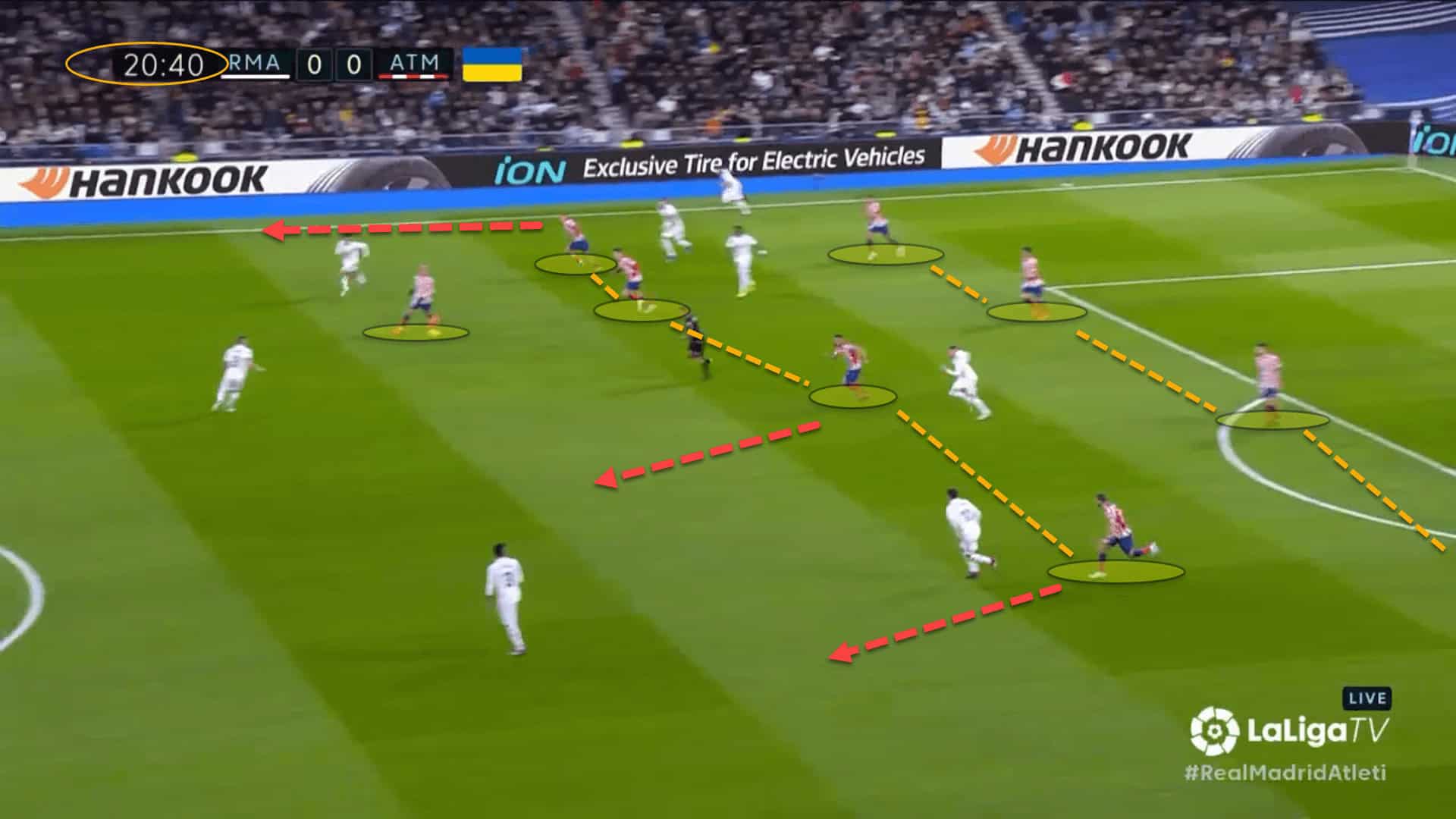
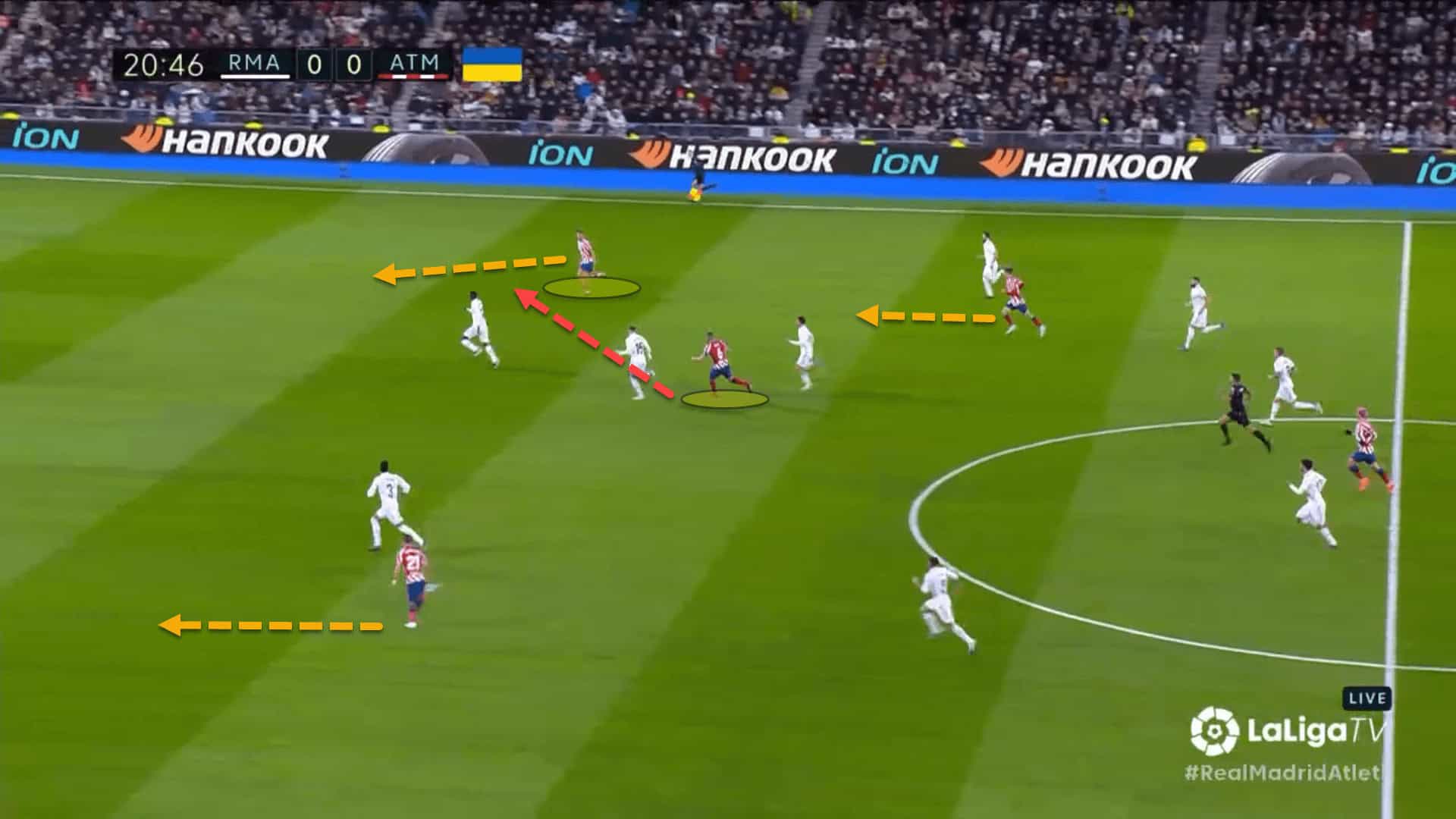
Having regained possession in a 4-4-2 low block, Atlético Madrid had moved from the first third to the final third in six seconds – yes, six!
The fact that the team are defending lower down the pitch in the last two months invites the opponent to attack higher and higher, luring them into a false sense of security before they are carved open.
Forward passes and rapid speed in behind are the key and when in full-flow, Atlético are such a dangerous team to play against, particularly if they break through a counterpress, leaving the opposition’s backline exposed.
Conclusion
Love them or hate them, having Atlético Madrid back being one of the most threatening teams in Europe makes La Liga more competitive.
Many had believed that Simeone’s time at the Wanda Metropolitano was coming to a bitter end and that fresh blood was needed in the dugout to get the side back competing. However, in the last two months, Simeone has proved that he’s still the main man on the red side of Madrid.
Going back to the basic tactical fundamentals of what made Atlético such an imposing threat in Europe and Spain in the mid-to-late 2010s has had unthinkable positive effects on performances and results.
With the right recruitment, perhaps we could see the 11-time league winners back competing for the biggest prizes in football next season under the longest-reigning manager in any top-five league.






Comments